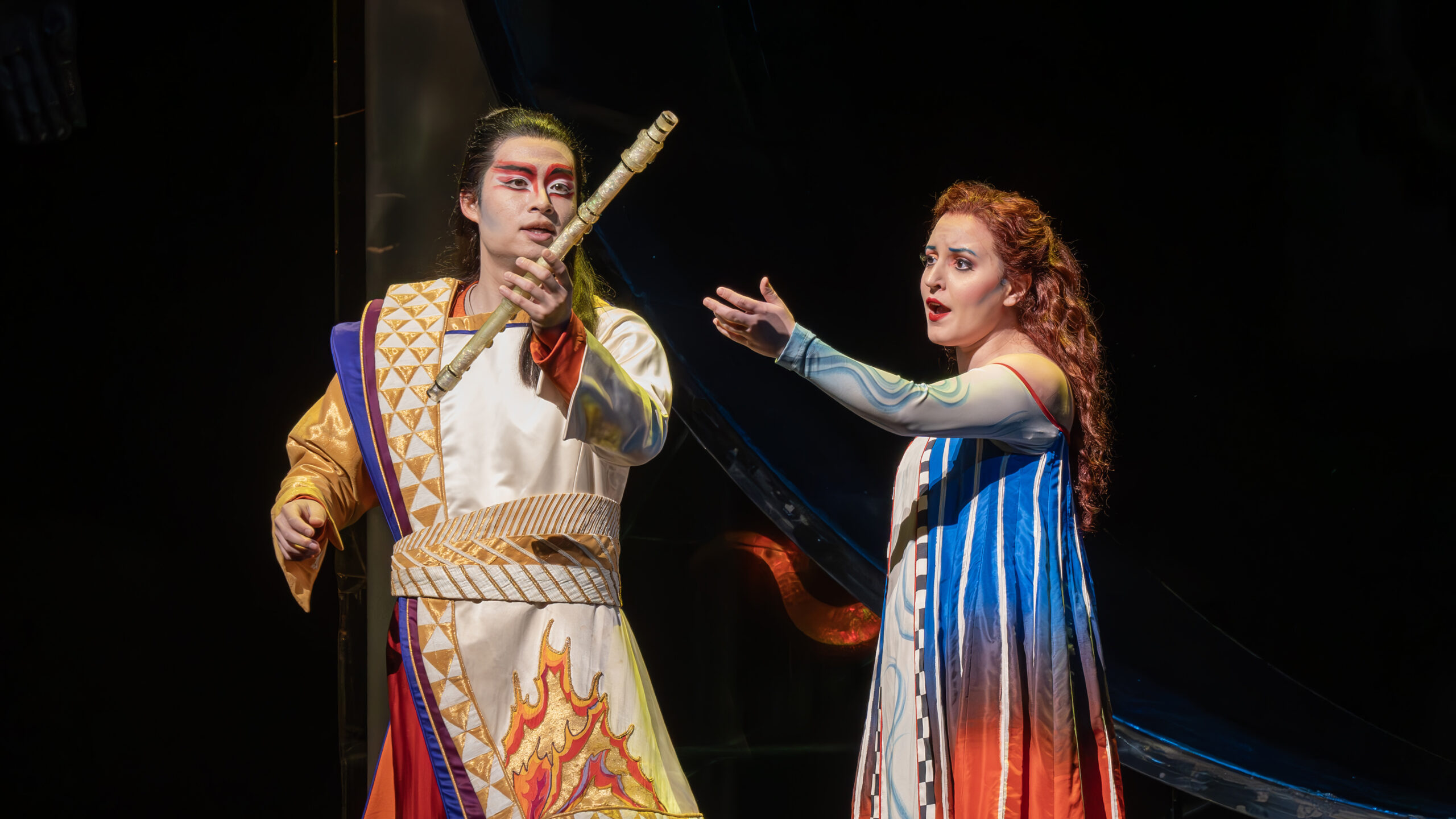
The first weekend (February 23) featured Stravinsky’s ballet Pulcinella in its rarely experienced entirety, paired alongside Brahms’s Violin Concerto as brilliantly performed by Julia Fischer. A week later, listeners were immersed within a synesthetic simulation of Alexander Scriabin’s tone poem Prometheus, complemented in its second half with a sensational performance of Béla Bartók’s psychologically riveting Bluebeard’s Castle. Both concerts were led by the San Francisco Symphony’s visionary music director Esa-Pekka Salonen, whose meticulous and intellectually engaging artistry have made his performances some of the season’s most vital and indispensable musical events.
Igor Stravinsky’s Pulcinella, a commission from Sergei Diaghilev for his Ballets Russes, marked the juncture for the composer’s forays into 20th century neoclassicism. Inspired by devious but lovable characters from 18th-century commedia dell’arte, Stravinsky’s temporal appropriations of these Baroque songs impart a modern sheen and a rhythmic spring to jovial melodies rife with musical and interpretive juxtapositions.
Salonen recorded a detailed if somewhat tame Pulcinella with the London Sinfonietta early during his career. If Salonen’s precise musicianship and his recording’s singers (Yvonne Kenny, John Aler, and Sir John Tomlinson) effectively accentuated the composer’s elegant insights into Baroque reorchestrations, his trademark coolness tempered the tart ribaldries threaded throughout the material. His recent revisitation of the score with the San Francisco Symphony evinced significant interpretive growth.
While Salonen played the first third spanning the serenata to the mezzo soprano’s lament “Contento forse vivere” with cool restraint, his ensemble gradually transitioned from exquisite refinement into frenetic and cartoonish slapstick. Salonen injected affection and adrenaline into vivacious passages like the tarantella and the ecstatic finale, offering principals like Rainer Eudeikis (cello), Daniel Smith (double bass), Mark Inouye (trumpet), Eugene Izotov (oboe), Yubeen Kim (flute), and Timothy Higgins (trombone) ample opportunity to shine in Stravinsky’s rollicking chamber repartée. Among the soloists, Sasha Cooke brought pathos to her amorous renderings of the mezzo soprano’s songs, while Luca Pisaroni’s exuded charisma and stylishness in his brief part, albeit with a bass diminished in vocal weight. Only Nicholas Phan’s constricted tenor disappointed due to his disconnect with his text’s abundance of wit and flirtatiousness.
Stravinsky’s polystylistic pastiche was followed in this program by Johannes Brahms’s deidedly romantic Violin Concerto. While initially envisioned as a collaboration between Julia Fischer and her longtime collaborator Michael Tilson Thomas, the former music director’s health concerns unfortunately caused him to cancel all but two of his scheduled concerts this season. In a stroke of serendipity, Salonen deputized and engaged Fischer into revitalizing this beloved staple of the orchestral canon with their immaculate sense for musical architecture.
Salonen and Fischer incorporated clarity and a trenchant exuberance into their construction of the music’s expansive arcs. While this interpretation skirted the rustic Hungarian abandon familiar from its greatest exponents, the opening movement was exhilarating–the cadenza’s exuberant double-stops and dizzying leaps executed by Fischer with spontaneity and inventiveness, the shifting dramatic moods and dynamics balanced coherently by Salonen’s ensemble. In the middle Adagio movement, the orchestra’s winds glowed during their extended opening, paving for Fischer’s soothing, singing, if somewhat sere rendition of her solo. The finale mirrors the opener in its explosive brilliance, with Salonen and Fischer building upon their rhythmic accuracy and momentum to bring the work to a boisterous and satisfying close.
During the weekend of March 1, the San Francisco Symphony pulled out all the stops and lavished audiences with a multisensory synesthetic reconstruction of Alexander Scriabin’s Prometheus. In addition to showcasing the French virtuoso Jean-Yves Thibaudet’s ostentatious piano solos, the orchestra collaborated with Cartier’s esteemed perfumer Mathilde Laurent and lighting director Luke Kritzeck to craft a one-of-a-kind, immersive sensory experience. Under the musical team’s direction, Laurent curated a symphony of scents, calibrating the auditorium’s diffusers and perfume cannons to emanate wafts of ozone, jasmine, spices, and bergamot alongside the score’s metaphysical dramatic arc. Meanwhile, Kritzeck’s ring of dynamic LED panels brought Scriabin’s clavier à lumières to life, mirroring the composer’s eccentric color-tonality system throughout the poem’s ebb and flow.
Musically, Salonen and his ensemble’s interpretation hemmed closer to the structural integrity characteristic of Pierre Boulez’s account as opposed to the sensationalistic readings that dredge faux mysticisms out of Scriabin’s densely chromatic music. Clarity, balance, and line reign in Salonen’s conception, stripping the music of its saccharine excesses and allowing its glossy, sonic beauties to charm the audience. It’s ultimately a delicious, sensual 20 minutes of empty calories, sweetened further by Thibaudet’s exciting musicianship and the orchestra’s manifestations of Scriabin’s vivid orchestral effects.
If Scriabin’s hieratic ethos doesn’t resonate as deeply with Salonen’s incisive intellect, the mysteries and intricate chromaticisms of Bluebeard’s Castle inspire the best from the conductor’s acuity and imagination. Salonen’s vivid grasp of Bartók’s inventive and colorful orchestration conjures visuals that are unraveled as Judit unlock each of the castle’s doors, almost obviating the need for Kritzcek’s subtle production lighting.
With the San Francisco Symphony in outstanding form, the torture chamber’s brooding horror is palpably chilling, the treasury gleams with luxurious wonder, the garden bursts with verdant beauty, and the lake of tears swirls with suspenseful, shadowy colors. As Judit and Bluebeard’s marriage is pulled apart by the exposure of secrets and memories, so too does Salonen audibly break and erode tonality as the horrors behind each door are revealed. Salonen transfixes the audience and depict the story’s dramatic arc with a painter’s fine brush, building the work up from the opening’s quiet, tension-ridden gloom to the blinding climax punctuated by the Symphony’s incredible Ruffatti organ, before eventually returning the music to an unsettling silence.
The opera’s captivating discourse was largely captured by the soloists Gerald Finley and Michelle DeYoung, both seasoned interpreters of these characters. Finley’s richly tinted bass baritone scaled the entirety of his difficult music with security, his choice of vocal colors imposing and appropriate to portraying this enigma of a man. His voice’s dark tints grew increasingly immediate as Bluebeard struggled to assert his authority against Judit’s repeated intrusions, and most importantly, he conveyed the character’s disquieting tragedy in the opera’s closing moments. DeYoung’s châtelaine initially struggled with projection and cloudy diction from the opening through the treasury scene, but her singing gained confidence and her emotional tussle with her husband brimmed with greater tension as the drama progressed. When Judit finally opened the fifth door, DeYoung was fully warmed up and unleashed a thrilling high C alongside the full orchestra and organ’s awesome bath of sound. Salonen with his singers realize this unnerving, voyeuristic tale with a strong sense of theater and searing tensions, a rewarding and psychologically riveting half to a concert structured around engaging the senses with music.
Esa-Pekka Salonen returns for five more concerts at the San Francisco Symphony this season. His spring programs will conclude in mid-March with an all-Sibelius program featuring Lisa Batiashvili as the soloist for the composer’s violin concerto. He returns in the summer to preside over Peter Sellars’ staging of Ravel’s Ma Mère L’Oye and the San Francisco Symphony premiere of Arnold Schönberg’s Erwartung. After two more concerts centered aroundShostakovich’s 1st Cello Concerto and Bruckner’s 4th Symphony, Salonen will conclude the season with Gustav Mahler’s sprawling 3rd Symphony.
Photos: Brandon Patoc
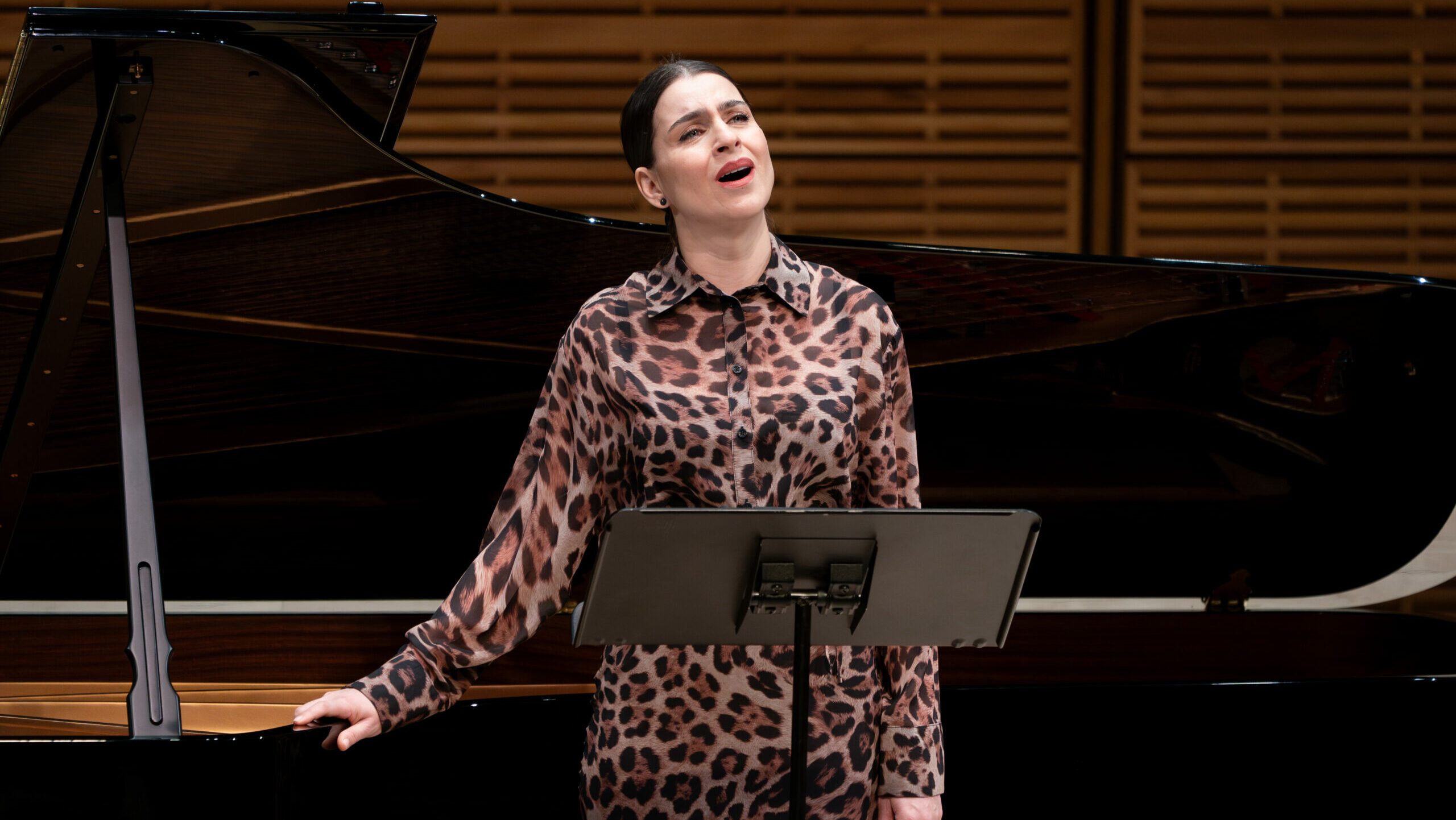













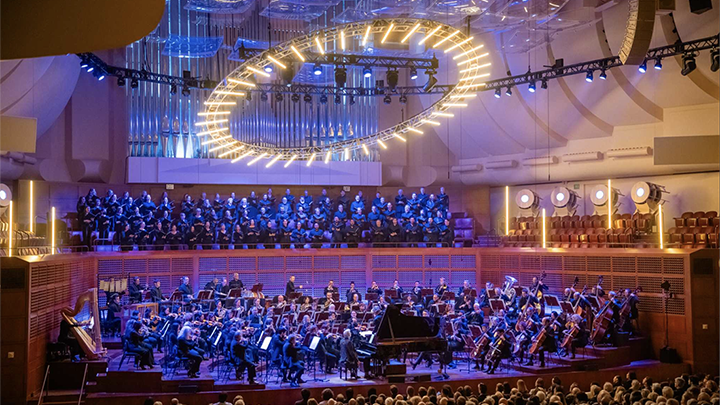
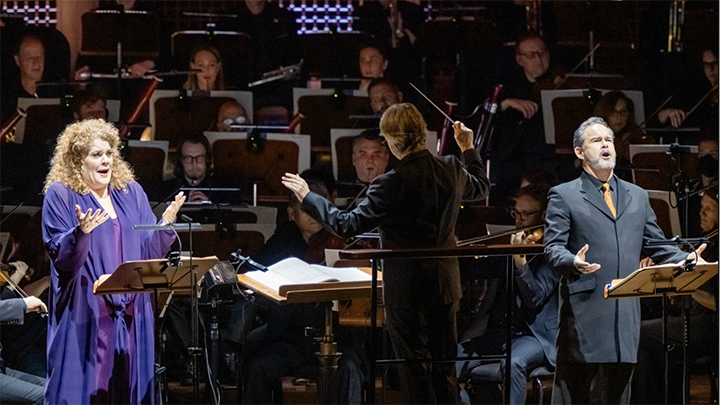




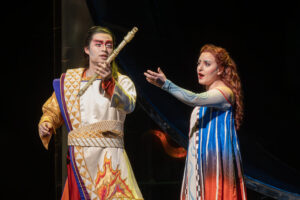

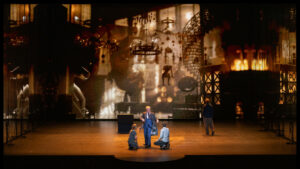
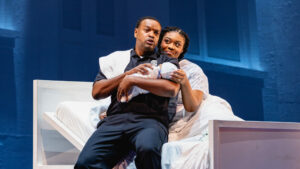



Comments